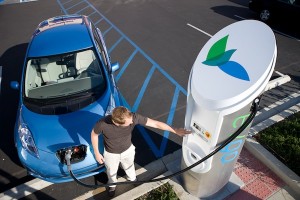A Tesla driver reports on his epic (11,000-mile) all-electric US road trip this summer. The driver went from his home in Seattle to national parks in California and then out to Maine. His only real challenge was the “Great Montana Supercharger Desert” between Rapid City, South Dakota and Ritzville, Washington — a distance of 916 miles with only a single Supercharger in Billings, Montana.
 First of all, it’s great to know that such a road trip is possible, although at this point it’s only for the most economically successful among us who can afford a Tesla. Second, this is the result of Tesla’s investment in a nationwide supercharger network, so they should be congratulated on providing this level of service for their customers. And finally, it’s a nice window into the future road trip possibilities for electric drives, once the costs come down and the infrastructure improves in the coming decade.
First of all, it’s great to know that such a road trip is possible, although at this point it’s only for the most economically successful among us who can afford a Tesla. Second, this is the result of Tesla’s investment in a nationwide supercharger network, so they should be congratulated on providing this level of service for their customers. And finally, it’s a nice window into the future road trip possibilities for electric drives, once the costs come down and the infrastructure improves in the coming decade.
But more importantly, this driver offers a common sense list of requirements for a functioning public charger network, and it’s a list that could apply even to Level 2 chargers for less expensive electric vehicles (I recommend reading the whole thing). I hope policy makers and charging companies alike take notice. The obvious prime factor is:
Reliability. There is no way around this one; it is key – the charger has to work when you get there. In fact, unreliable chargers are WORSE than no chargers – without chargers, the owner will have made other plans for the trip; but with an unreliable charger, they may encounter a long unexpected delay.
As an EV driver, I don’t really have “range anxiety” about running out of juice on a big drive, but I do have this kind of “charger anxiety.” Will the charger I expect to use be functional when I arrive? And relatedly, will it be available or will there be a long line?
The driver makes another important point about what he calls “usability.” No key fobs, please, or complicated charging company networks that you have to sign up for in order to use the charging equipment. We need to make the transaction as smooth as possible, just like a gas station credit card reader.
Once we solve these seemingly minor but significant hurdles, more of us will be in a position to take the kind of all-electric road trip that this driver got to enjoy.
Leave a Reply
You must be logged in to post a comment.


